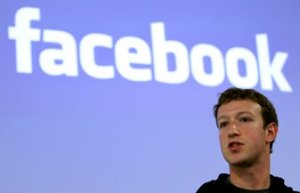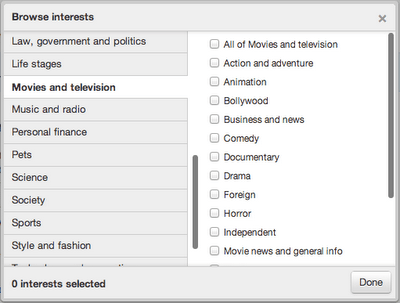This is a repost of my iMedia Connection Cover Story.
With the combination of 40 million users in a little over 88 days and a 68% share of the search market, Google is positioned to fully maximize social engagement with Google+. The initial launch strategy was primarily consumer focused and any branded solutions were put on hold. With the recent release of Google+ pages, now is the time to define your brands strategy when it comes to fully maximizing the benefits of Google+ both short & long term.

There has been a lot of discussion about how Google+ compares to Facebook and the ideal ways to leverage the platforms. It is important to note that even though there are many similarities, the fact remains that both platforms have some major differences and strategy around maximizing resource allocation will be key moving forward.
On the surface the two networks are eerily similar. Status updates (Newsfeeds & Streams), photo sharing, social games & external activators (“Like” Button & +1). Further, both enable 3rd party development, integration with mobile & a desire to connect & share. But the fundamental difference is that Facebook is a true social network — and has been from day one — and that is the true strength of the platform. Google+ which appears to be a social network but is actually a representation of the evolution of user behavior tied to relevant content, search, discoverability and connection.

Thus, when it comes to maximizing your Facebook strategy, be it acquisition, engagement or advocacy, it is fairly self contained within Facebook’s walled garden, with the ability to aggregate content to third party locations and a limited contextual impact on topical search results. That being said, one of the key points of differentiation is how Google+ content is directly relevant to search results, and how that will potentially drive business value around the +1 as it is pervasive beyond Google+.
This statement was just reaffirmed by an e-mail I received from Google this morning: “Your +1’s reach not only the 40 million users of Google+, but all users who come to Google every day.”

Here are 10 potential strategic advantages & benefits for brands to incorporate Google+ into their 2012 social and search strategies.
Potential Brand Benefits of Google+ Brand Pages/Entities
1 ) Integration with Google Search – Google currently owns 68% of search market share. The fact that the Google +1 icon is now a part of every Google search result shows a glimpse of the level of integration Google has in store for users & brands alike. A user can directly recommend a link from their search results, and that recommendation is simultaneously shared on the users Google+ +1 profile section. By combining paid search and incenting +1 behaviors, you can begin to see the potential of this level of integration as the user may not be actively engaged on Google+, but the ability to drive a user to engage by recommending content with the click of a single button is appealing.
Now, you can also automatically add Google+ pages to your circles from Google Search.
Here is an example of a search for BlackFin360. I choose to +1 the Page

The +1 is then aggregated into my Google+ profile under +1’s

2 ) Google +1 – Similar to the Facebook Like button, the Google +1 button has the opportunity to truly transcend the platform by driving significant 3rd party integration. In fact the Google +1 button overtook the Twitter tweet button on most major websites with a 33 percent spike in integration recently. Granted, it is still far behind the Like button in terms of saturation but the fact that both Facebook & Google+ drive engagement to a central destination — as opposed to simply being a conduit to various destinations such as Twitter — shows the potential of 3rd party integrations to drive engagement.
According to Google, “People can now recommend your brand, not just your individual ads or sites, helping your +1’s add up faster”.

The +1’s value goes beyond Google+ and really speaks to the longer-term goal of Google, which is true integration and relevance across social & search content. This is an incredibly smart move by Google. What will really win the day for Google is the ability to connect social, search & self-service profiling. This will further enable brand sites more so than Facebook’s internalized approach. Further, with the addition of the +1 to image searches as well as integration with YouTube, it is possible to drive additional +1’s from multiple points.

3) Direct Connect – Now, you can also automatically add Google+ pages to your circles from Google Search. By adding +BrandName as part of your search query, you will be taken directly to the brands Google+ page and have the ability to add to your circles. This is not immediately available and certain steps have to be taken in order to enable this process, but the potential benefits are significant.

4 ) Circles & User Segmentation – Allowing brands to potentially segment fans is a big win. One of the issues with brand management on Facebook is tied to messaging across audience segments. By allowing brands to potentially seamlessly categorize fans, it allows the style of engagement to change dramatically. Imagine if you are driving engagement with 13-17 year old segments as well as 18-24 year olds. The brand & social persona’s associated with content could shift to further driving engagement based on audience segment vs. a one size fits all approach.
One important note about “circles” for pages is that the brand page cannot add a person to it’s circles until that user has already added the page to one of their circles. This is primarily based on messaging to users and having to opt-in by adding the brand into their circles first. Another major change from the user profiles is that all content is set to public.
When it comes to driving acquisition strategy within Google+ as a brand, it is initially inherently more valuable for a user to add you to a circle as opposed to giving you a +1. Think of it this way: The addition to a user circle is equivalent to a Facebook “like” in terms of impact to the stream and ability to interact directly with users.
Branded Circles are arranged by Following, Customers, VIP’s & Team Members.

5 ) Google Advertising Programs – Google+ will inherently “increase the performance of your ads: +1’s surface recommendations in search and display ads”. (Or so the email from Google referenced.) Looking at tightly coupled integration with social content, relevance associated with interests within Sparks and Google’s Display Network, Google AdWords and Double Click advertising products, and how robust Google Analytics can be in comparison to Facebook Insights, it is easy to see the strategic benefit to a brand to take advantage of this level of integration.

6 ) Sparks & Recommendation Engine – One of the most impactful elements of Google+ for brands is potentially Sparks. Brands could focus advertising dollars on Sparks programs that are relevant to their brand & product offerings. Taking it a step further, creation of a recommended or +1 relevance based on a users & circles sparks/interests that is then socially shared could be very compelling. This would be very similar to Facebook’s sponsored stories.

7 ) YouTube, Hangouts & Google TV Integration – With YouTube a part of the Google family, Google+ integration was sure to be a part of the strategy. The inherent social nature of YouTube translates well in terms of integration of +1 — embedding video and further integrating the YouTube & Google+ experience to make sharing and recommending content even easier. From a brand perspective, being able to distribute unique, consumer-generated content that is relevant to the brand while driving +1’s back to a brand page is very appealing. One of the interesting additions was also the decision to integrate Hangouts with YouTube’s sharing options.
Now a brand can post video content and possibly give a product preview to VIP’s or influencers. This takes the traditional webinar and flips it into a more engaging way to drive F2F discussions.

One area that really intrigues me is how Google TV may integrate with Google+ to create a truly social entertainment experience. I envision further integration between Google TV, YouTube, Hulu & Android to drive truly integrated entertainment experiences across screens. From a media perspective, you could truly bridge the gap between traditional & digital placement by incorporating a relevant ad placement via information collected from Sparks & Google Search. This to me is the future of enhanced television.

8) Google+ & Social Gaming – Google invested 100 million dollars into Zynga in 2010, and recently rolled out Google+ Games. With over 50% of Facebooks 700 million engaged daily with Facebook social games, it is a key motivator for brands to monitor the Google Games offering. Keep an eye out for how Zynga and others align with Google+ to further drive engagement, creation of options to add users into brand circles, and how game engagement will translate to the Google adwords program.

The success of recent brand integrations on Facebook with Farmville, including Frito-Lays recent world record for driving “Likes”, has given notice to brand managers of the power of Social Games & strategic partnerships with the game providers. With the additional layers of integration found with Google+ it will be interesting to see who can quickly capitalize.

9 ) 3rd Party Development Platform – One of the keys to successful Facebook engagement has been the enablement of third- party developers to create an application ecosystem within the platform. As with the recent rollout of Google+ Games, Google+ will enable developers access to relevant API’s, as it has done in the past, and the ability to extend the platform. This is crucial to creating opportunities to engage and differentiate on the platform.
Take a look at Google’s Robust API’s (click to enlarge):

10 ) Android Integration – With the Android’s market share currently at 49.5%, integration with Google+ is a key point of differentiation for both Google+ & Android. With both an app & web version of Google+ and an Android exclusive with the Google+ Huddle functionality, the level of integration between Android & Google+ is palpable. With the recent release of Ice Cream Sandwich, Android’s latest operating system, Google+ also saw a major revamp in terms of user interface, ability to interact with the platform and share directly from Android devices. With the streamlined changes, and the AdMob & Adsense offerings, it will be very interesting to see how brands fully capitalize on +1 and mobile behaviors to further drive engagement & relevant ad serving.

Other areas of focus & interest will be how international or localized regions are supported in terms of aggregating brand +1’s, and how the Google+ commerce & currency platform strategies will unfold.
Brands will need to evaluate the true reach and amplification of the +1 from an earned media perspective. Be sure to note the differences in what shows up individually in your streams versus what is tied to content. Wiht Facebook, one of the secrets outside of edgerank is the level of detail that is shown by interaction.
Regardless, there is enough evidence of the potential benefit of Google+ brand pages to dedicate time & ample resources to develop a platform-related digital strategy heading into 2012.
Add BlackFin360 to your circles here.
Follow Tom Edwards @BlackFin360





















































































































































































































































































































































